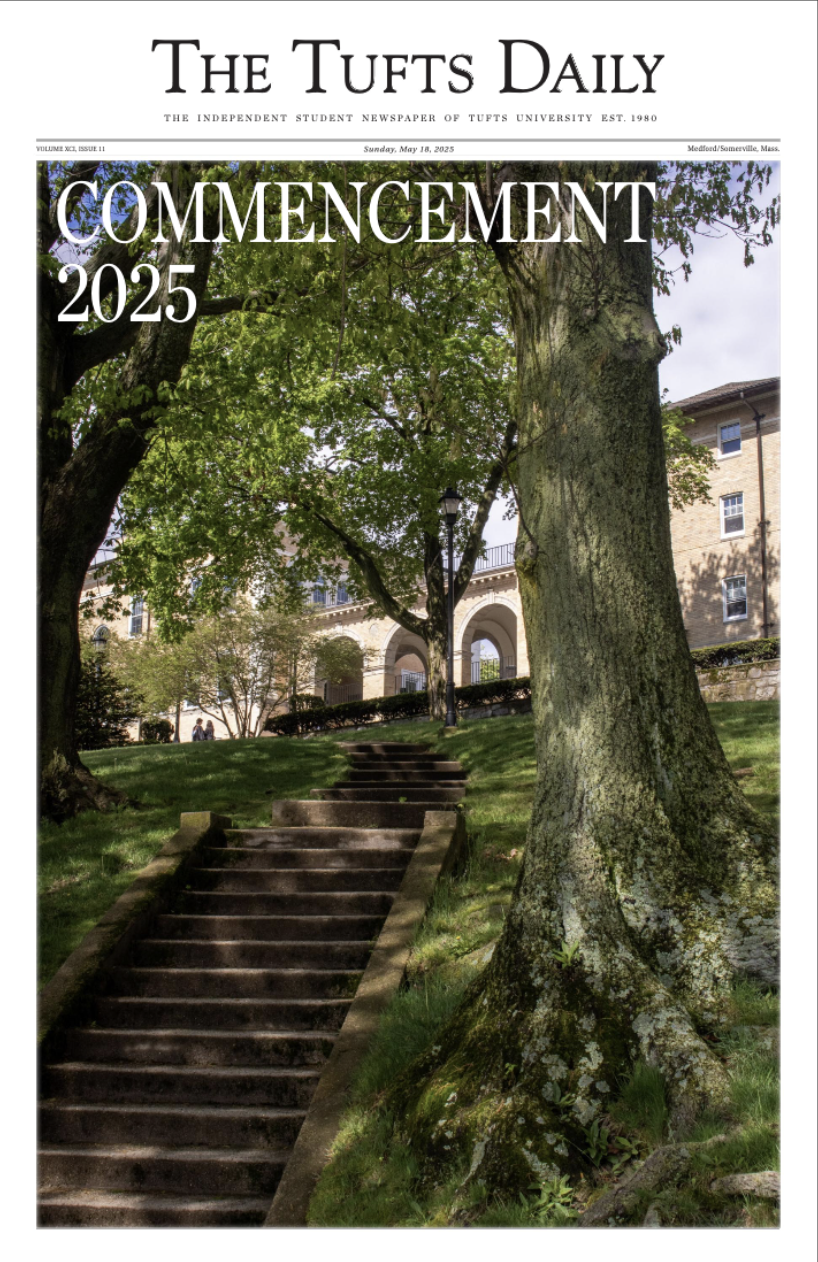Editor’s note: This column is a special feature. It is published in Spanish in order to expand the Daily’s coverage but follows our standard journalistic practices. The English version can be found below.
¡Punchao! Esa es otra manera de decir ‘hola’ en quechua que aprendí recientemente. Como ya saben, he estado aprendiendo quechua en mi programa de intercambio al extranjero, y para ponernos a prueba final, nos enviaron a un viaje académico a la isla de Taquile donde la mayoría de la población sólo habla quechua. Surgieron dos problemas: yo solo sabía como decir hola, adiós y los números cero a 10, y eso era todo en quechua cuzqueño, no quechua taquileño. Se estarán preguntando: ¿Qué tan distintos pueden ser? En mi columna previa, los salude con la palabra “Allillanchu” que es ‘hola’ en quechua cusqueño y aquí usé “Punchao” que quiere decir lo mismo en quechua taquileño (y eso es solo la punta del ‘iceberg’ de las diferencias en los dialectos). Habiendo dicho eso, lo pasé bien en la isla; no siempre tiene uno la oportunidad de desconectarse completamente, darles de comer a las ovejas y tratar de aprender a tejer. Incluso me vistieron con ropa tradicional taquileña: faldas de varias capas, una faja y el equivalente a un velo que fue bastante difícil de mantener puesto, pero me ayudó a evitar quemarme más con el sol.
Esta excursión fue solo la mitad de un viaje académico que duró 10 días y marcó la conclusión de mis clases de quechua e historia. Después de salir de la isla, con poquito conocimiento de quechua pero mucho conocimiento de su sistema de salud (sin entrar en detalles, solo tienen un puesto de salud y ninguna enfermera habla quechua — el idioma principal de la comunidad), regresamos a Puno el Día de San Patricio. Para mi horror, nadie en Puno parecía saber qué era; ni siquiera el personal del programa conocía la querida fiesta. Como una chica peruana-irlandesa, me entristeció profundamente la falta de festividad. No había ni un solo ‘pub’ irlandés y faltaban decoraciones verdes. Pero perseveré, y para mi gran alegría, un día después, tras un viaje en coche de cinco horas hasta nuestro siguiente destino, encontré no uno si no dos pubs irlandeses en un pequeño pueblo en las montañas. ¡Más vale tarde que nunca para celebrar! Al día siguiente, fuimos al cañón del Colca para observar a los cóndores, el ave nacional del Perú. Tuve que levantarme al amanecer, pero valió la pena; pude ver al menos 10 cóndores, algunos tomando sol y otros volando por el cañón. Si bien no pude ver a Paddington en este viaje académico, al menos ví algunas aves gigantes muy interesantes.
Nuestro destino final en este viaje fue Arequipa, un distrito en la frontera del desierto y la costa, pero que se sintió más como una ciudad costera. Casi todo el pueblo parece construido de ladrillos blancos, y desde que terminó el verano, la ciudad se sentía prácticamente iluminada por el sol. Desafortunadamente, no estuvimos mucho tiempo en el pueblo, y como era el final del viaje, nuestro grupo estaba agotado así que no exploramos mucho más allá de la Plaza de Armas. Sin embargo, planeo volver para poder hacerle justicia a la ciudad.
Como apunte curioso, soy el peruano Cesar Millan, la única encantadora de perros. Por si no saben, en Perú hay muchos perros callejeros o simplemente perros que prefieren vagar por las calles durante el día en lugar de quedarse en casa. Como amante de los perros, yo saludo a la mayoría de los perros que encuentro con la mano. Esto ha resultado en entablar muchas amistades caninas, y a veces una pequeña pandilla que me sigue hasta mi destino. Nunca fue mi intención crear un culto de compañeros caninos, pero parece que a los perros peruanos les faltan caricias. ¿Y quién soy yo para negárselas? Si, acariciar a los perros callejeros tiene ciertos riesgos pero valen la pena.
Eso es todo por ahora; actualmente me enfrento a dos semanas seguidas de clases de español antes de nuestro próximo viaje académico, donde espero encontrar a tía Lucy. ¡Hasta luego!
Tupananchiskama,
Chrystal
Punchao! That’s another way to say ‘hello’ in Quechua that I learned recently. As you all know, I’ve been learning Quechua in my abroad program, and to put us to the ultimate test, they sent us on an academic journey to Taquile Island, where most of the population speaks only Quechua. Two problems arose: I only knew how to say ‘hello,’ ‘goodbye’ and the numbers between zero to 10, and all of that was Cusco Quechua, not Taquile Quechua. You may be wondering: How different can they be? During my last column, I greeted you all with the word “Allillanchu” which is Cusco Quechua, and here I used “Punchao” which is Taquile Quechua (and that’s just the tip of the iceberg for the differences in the dialects). With all that being said, I had a very good time on the island; it’s not often you get the opportunity to go entirely off the grid, feed some sheep and try to learn how to weave. I even got fitted up in their traditional clothing, many-layered skirts, a corset-like garment and the equivalent of a veil, which was a pain to keep on but did prevent me from getting any more sunburnt.
This off-the-grid excursion was only half of a 10-day academic trip that wrapped up my Quechua and history classes. After leaving the island, with little knowledge of Quechua but a lot of knowledge about its healthcare system (not to get into specifics, but they only have one outpost, and none of the nurses speak Quechua — the primary language of the community), we headed back to Puno on St. Patrick’s Day. To my horror, no one in Puno seemed to know what it was; even the program staff didn’t know about the beloved holiday. As a Peruvian-Irish gal, I was deeply saddened by the lack of festivity. There was not a single Irish pub and a severe lack of greenery. But I persisted, and to my utter delight, one day later and on a five-hour car ride to our following location, I found not one, but two Irish pubs in a small mountain town. Better late than never to celebrate! The next day, we went to Colca Canyon to see condors, the national bird of Peru. I had to wake up at the crack of dawn, but it was worth it; I could see at least 10 condors, some sunbathed while others flew around the canyon. If I couldn’t see Paddington on this academic trip, at the very least, I got to see some very cool, giant birds.
Our final destination on this trip was Arequipa, a district that borders the desert and coast but felt more like a coastal city. Almost the entire town seemed to be built with white brick, and since summer ended, the city felt practically illuminated by the sun. Unfortunately, we didn’t have much time in the town, and since it was at the end of the journey, we were exhausted, so not much was explored besides the Plaza de Armas. However, I will be going back so I can do the city justice.
As a fun side note, I am the Peruvian Cesar Millan, the only dog whisperer. If you don’t know, Peru has a lot of stray street dogs or just dogs that choose to roam the streets during the day rather than stay at home. As a dog lover, I wave and say hola to most dogs I encounter. This has led to many dog friends and sometimes a small gang following me to my destination. I never intended to grow a cult following of canine companions, but Peruvian dogs are apparently in dire need of little head pets. And who am I to deny them that? Yes, there are certain risks to petting street dogs, but the risk is worth the reward.
That’s it for now; I’m currently facing two weeks of straight Spanish classes before our next academic journey, where I hope to find Aunt Lucy. See you next time!
Tupananchiskama,
Chrystal






